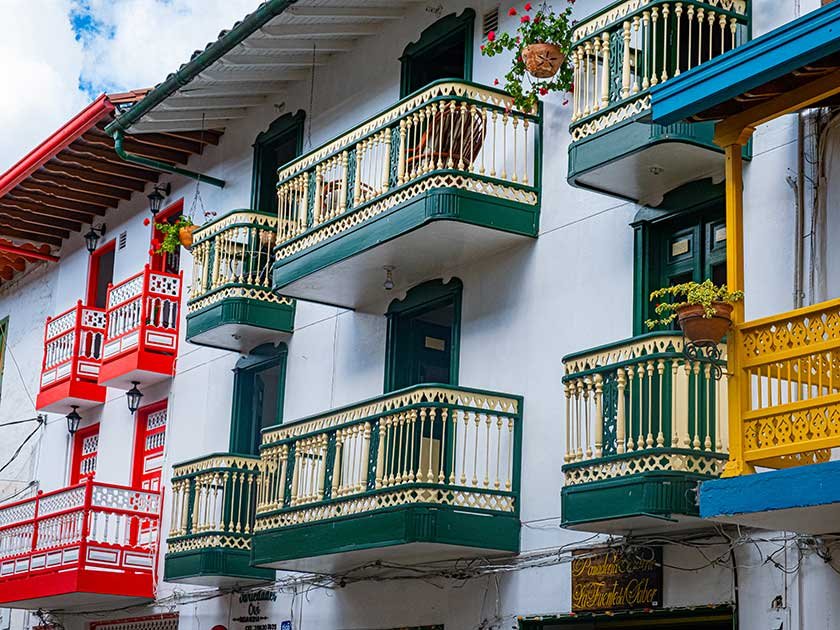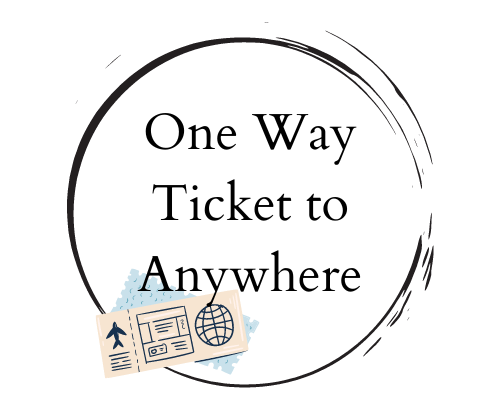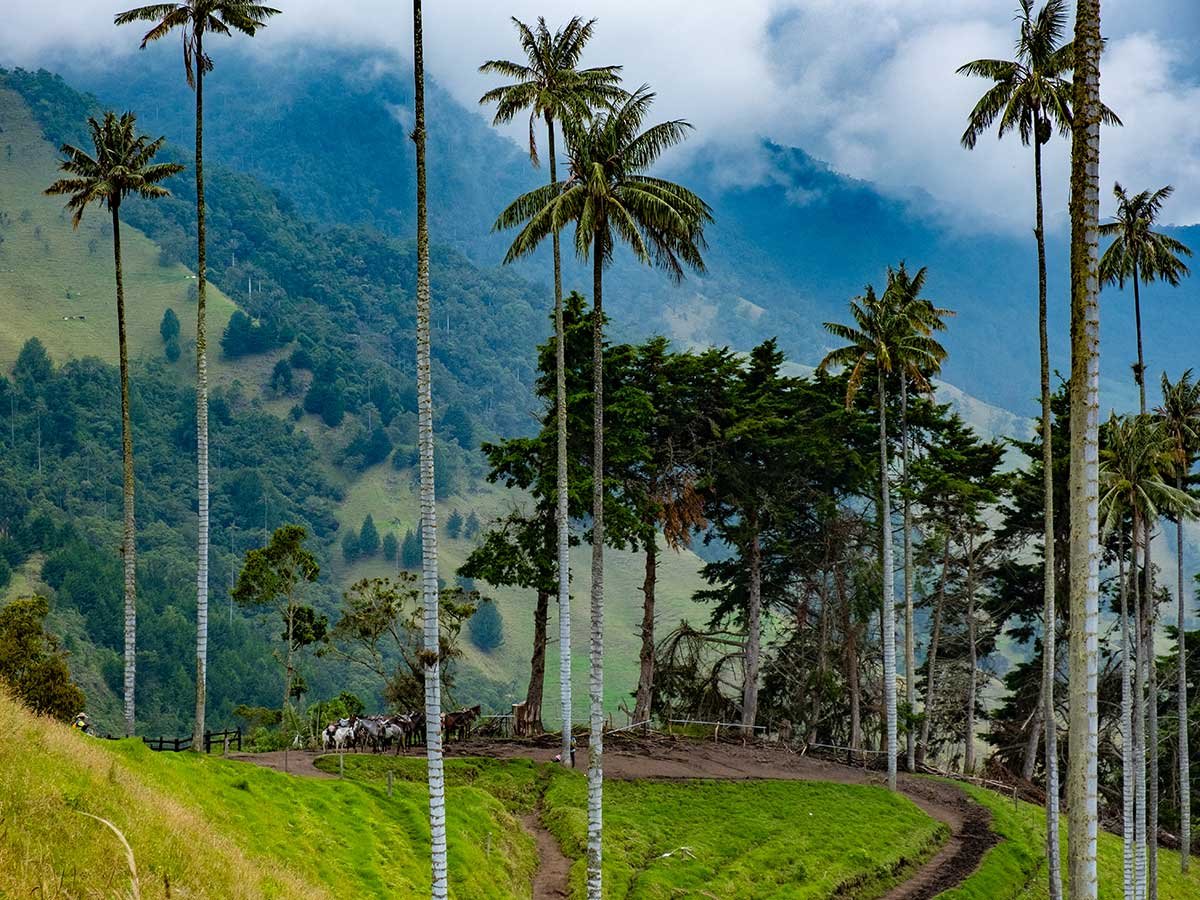Everything You Need To Know About Visiting Colombia Coffee Region
So you decided to visit the coffee region of Colombia, but don’t know where to start? Then you have come to the right place. In this post, you will find everything you need to know: how to get there, where to stay, and what to see and do in the incredibly beautiful coffee axis in Colombia.
So you decided to visit the coffee region of Colombia, but don’t know where to start? Then you have come to the right place.
In this post, you will find everything you need to know: how to plan your itinerary, where to stay and what to see and do in the incredibly beautiful coffee axis in Colombia.
Be it for its culture, landscapes, nature, or all kinds of climates – Colombia is one of the most diverse countries in the world. From the hot and humid Caribbean coast or the wild Pacific to the jungles of the Amazon, waterfalls, majestic mountains, and lush valleys – there is so much to discover in Colombia that a lifetime wouldn’t be enough.
But if you really want to experience Colombia, you have to visit its coffee region.
This was also an absolute must for me, and I was very much looking forward to the cooler climate of the coffee triangle, as I had been traveling for almost two months on the Colombian Caribbean coast. I was ready to see the mountains, hike, and put on my jeans and sweater.
I spent almost 3 weeks traveling around the region and I was mesmerized by its beauty, landscapes, and incredible kindness of people.
So let me share with you everything I know about visiting Colombia Eje Cafetero.

This blog is supported by you. The content, written with love and passion, will always remain free. My posts may contain affiliate links, which means that I will receive a small commission if you purchase the product or make a booking through one of my links. I will never recommend or promote a product I don’t believe in or haven’t used myself. This way, you support my work at no extra cost to you. Thank you!
So what is Colombia’s coffee region?
The Colombia Coffee Region, also known as Coffee Trainle, Coffee Axis, or Eje Cafetero in Spanish is a UNESCO-recognised cultural landscape and is famous for its charming colonial pueblos like Salento, Jardin, or Filandia. It stretches across three different departments of Colombia – Quuindio, Caldas, and Risaralda and is home to the stunning Los Nevados National Park and the famous Cocora Valley.

This region lies on the western slope of the Andean mountain range and is most famous for producing some of the highest-quality Arabica coffee in the world. It has become synonymous with Colombian coffee, and one of the most popular things to do in the region is visit to a traditional coffee finca where you can observe the coffee production process.
The people here, often referred to as “cafeteros,” have a deep connection to the land, and coffee farming is both a livelihood and a way of life.
It is safe for solo travelers?
Colombia Coffee Axis is one of the safest regions in the country for solo travelers and any travelers. In fact, one of the biggest cities in the region, Manizales has officially been named the safest city in Colombia.
Colombia is probably safer now than it ever has been, although you may run into petty crime, like pickpocketing. I wouldn’t leave my things unattended, or I wouldn’t walk around with a phone in my back pocket (you know, the common sense stuff), but it’s nothing like it used to be decades ago.
Tourism is very important for Colombians and they will do everything they can to make your stay safe and wonderful.
Until now, Colombia remained one of my favorite countries ever!

Weather and the best time to go
Colombia’s weather varies more based on the location or altitude rather than the time of the year.
Colombia’s coffee region is situated between 1,200 and 1,800 meters above sea level and has a temperate climate. You will typically experience around 20-25°C (68-77°F) during the day and at night it will drop to around 15°C (61°F).
If you are planning on taking longer, multiday hikes, to ensure dryer trails (not guaranteed) it would be best to travel from December to March and June to August. But even during dryer months, you should expect regular but short rain showers, especially in the afternoons.

I hiked in Cocora Valley in early August and had beautiful, sunny weather all day. Until I reached the end, when the weather turned, the sky darkened and it was pouring with rain as I was loaded into the jeep back to Salento. Freezing cold. So be prepared.
What to pack
You have to be prepared for temperature differences between day and night and more frequent rainfall, which is typical of mountainous regions.
I hiked in shorts and a vest top but I was freezing by the time the day was over. There were days when I had to wear jeans, and there were days when I wore a summer dress.
So here’s some advice on what to pack for a visit to the coffee axis:
Best way to travel to Cooffee Axis
There are two likely starting points for travelers to get to the coffee region in Colombia. You can travel from Medellin to Jardin and make your way down the region that way. Or you can travel to Armenia or Pereira and take a bus from those towns to places like Salento, or Filandia.
If you are up for an adventure and are in Medellin, I recommend taking a bus to Jardin and staying there for a few days (mandatory!). Then take an adventurous ride to Filandia or Salento.
If you are in Bogota you can either fly or take a bus to Armenia or Pereira. Flying is of course much more convenient and comfortable. But I traveled by bus from Armenia to Bogota and it was not bad at all!

Where to stay in Zona Cafetera
Different types of stay to choose from
Before deciding on accommodation, ask yourself what kind of experience you are looking for.
Many travelers choose to stay on an eco or coffee farm, at a remote hotel in the mountains, or on the outskirts of the city and do a few day trips from there. This is a great option if you just want to relax in the countryside and are happy with just seeing a few places, taking organized tours, or if you decide to drive.
It is not the best option if you are traveling on a budget. More on this below.
There are a few outstanding accommodation options if this is your choice.
Finca Hotel el Palmar – near Montenegro (Armenia). Stunning location, excellent service, and farm-to-table food!
Atardeceres del Cafe – near Manizales. Spectacular views and rustic luxury!
Finca Hotel El Rancho De Salento – near Salento. Perfect for horseriding lovers and those looking for traditional charm.
Finca El Sueño De Mi Abuelo – near Pereira. Charming, affordable, and a great starting point for hiking expeditions.
La Casita Filandia – near Filandia. Absolautely spectacular!
Ecohotel Piedemonte – just outside of Salento and excellent value for money!
Bio Habitat hotel – stunning eco-hotel near Armenia.
Glamping Entre Rios – glamping with the river view not far from Armenia Airport.
Ecoresort Gran Azul – perfect option if you want to stay within walking distance to Salento.
Ecohotel Monte Tierra Habitaciones y Glamping – beautiful and spacious domes with stunning views near Filandia.
You can also make visiting the Coffee Axis a road trip and travel from one town to another or stay in a couple of towns and take day trips from there. For this option read the section below.

If you are a budget traveler you are in luck! There are a few awesome hostels in towns like Filandia, Salento, or Jardin that offer excellent value, beautiful settings, and a social environment!
The best base towns in Colombia’s Coffee Region
If you are a backpacker or traveler who prefers to stay centrally, maybe travel around or make one town a base and see the rest of the region, here are some of the best options.
Salento is one of the best towns to base yourself in while visiting Colombia’s coffee region. It’s one of the most popular towns, but don’t let that put you off. It oozes charm and offers plenty of things to do. It also has an excellent tourist infrastructure, which makes it an ideal starting point for day trips, like visiting Cocora Valley or Filandia.

Filandia – I call it a smaller, less popular sister of Salento. This super charming colonial town has everything that Salento has but with fewer tourists. If you are a foodie or a cafe culture amateur, Filandia will be a paradise on earth! There are also plenty of accommodation options in town and some great hiking trails. You can easily visit Cocora Valley or Salento from Filandia.

Salamina or Jardin – Both towns are great options if you are looking to go off the beaten trail in Colombia Coffee Axis. Salamina is a lesser-known yet equally charming little colonial town, and Jardin, while a little busier with tourists (especially on a day trip from Medellin), is still beautifully quaint.
Both Salamina and Jardin are kind of in the middle of nowhere, located halfway between Medellin and Manizales, and are tricky to visit the rest of the region from. It could be an interesting option if you wanted to spend more time in one, authentic town and then make your way down to towns like Salento, Filandia, or even Manizales.

Pereira or Armenia – I put both Pereira and Armenia in one category as both are rather large cities treated more like an entry point to the region than a destination on their own. I have not stayed in any of them. I arrived in Pereira and left from Armenia and that was my experience but from what I heard there are much better options out there.
Yes, there is some charm and interesting sights to be found in both cities. Both are great options if you want to stay near the airport or bus station and just stay for a couple of days in a nearby coffee farm – and there are plenty of amazing ones near both cities.
Manizales – If you are looking to stay in a larger town for a little bit longer and discover the rest of the region from there Manizales could be the best option. It is a beautiful, super safe, and historically and culturally rich city. Manizales is the capital of the Caldas department and is surrounded by beautiful coffee farms and majestic mountains.
It is also known as Colombia University City so you will see many young people on the streets. It is a great base to visit places like Los Nevados National Park, Cocora Valley, Salento, or Salamina.
Best places to visit and things to do in Colombia Coffee Triangle
Hiking Cocora valley
Cocora Valley (Valle de Cocora in Spanish) is a stunning natural reserve in the Andean mountains of central Colombia, within the Quindío department, near the town of Salento. It is a must-see for anyone visiting the coffee region and is famous for its breathtaking landscapes, towering Quindío wax palms, and mysterious cloud forests.
It is best to dedicate a whole day to visiting Cocora. There are many great hiking trails including the 5 hours loop trail which I highly recommend!

Visiting Coffee Finca
You can’t say you visited the Colombian coffee region if you didn’t witness the coffee-producing process in one of the traditional fincas.
There are plenty of them across the region, and wherever you decide to stay you will find one nearby.
During this experience, you will learn everything about coffee growing. From planting a coffee seed to learning how to grind the coffee properly and how to brew and pour the perfect cup of coffee. If you are a coffee fanatic like me, you will love it!

Exploring colonial pueblos
One of the best things to do around Eje Cafetero is to explore its colorful, traditional colonial towns. And there are so many to choose from!
Salento – the most popular and the nearest town to Cocora Valley. Most travelers would visit Salento so be prepared for a bit more touristy experience but I still believe it is very much worth visiting. It is a very beautiful, colorful, and vibrant town with many great things to do.
Filandia – a bit less touristy and a must-visit in my opinion. You can either visit it on a day trip from Salento or make it a few days stop which I recommend.

Jardin – it was the first colonial town I visited during my Zona cafeteria trip and I was mesmerized by this town! It is truly one of the most charming pueblos of them all and very much worth making an effort to get there.
Salamina – still very much off the beaten path and a bit in the middle of nowhere but one of the most beautiful towns in the region. Extremely authentic. it is a heritage town located in Caldas department and was declared a National Monument in 1982.
Santa Rosa de Cabal – famous for its stunning waterfalls and hot springs, Santa Rosa is a nature lovers paradise. It is famous for being the entrance point to Los Nevados National Natural Park and for its magnificent hot springs and waterfalls of cold water. It is super picturesque and a very unique thing to do in Zona Cafetara.
Montenegro – a small colonial town not far from Salento and Armenia most known for the fun Parque del Café theme park. It is a great place to visit with kids as it offers a mix of fun and educational activities and it’s a fun way to learn more about the coffee culture of the region.
Quimbaya – a home to Aldea del artesano (artisan village), as well as Quimbaya Fauna and Flora Sanctuary.

Enjoying Hot springs
Santa Rosa de Cabal is not the only place in the region where you can enjoy hot springs, although it is the most famous one.
Near Manizales, you will also find Tierra Viva hot springs known for their tropical vibe. If you are looking for a totally natural and undeveloped hot spring you will have to head to Los Nevados National Park where you will find stunning Termales del Cañón located 2.5 hours drive from Ibagué in Tolima.
A ride in a Willy Jeep
One of the best ways of getting around Colombia’s coffee region is by the famous Willy Jeep! It is not only a way of transportation, it’s an experience in itself.
Willy Jeep is not only a symbolic vehicle of the Colombian coffee region but it has also been recognized as an official Colombian Cultural Heritage.

Willy jeeps were Used by the American Army during the Second World War. After the war, they started selling them at a very attractive price in developing countries, including Colombia. The first Willys appeared in Colombia in 1946. Colombian farmers and cafeteros appreciated them for their power and maneuverability and were used to transport goods, animals, and passengers. The fully loaded jeeps hold the name of ‘Yipao’ (and the cargo is pretty impressive) and are also often called ‘mulas mecánicas’ (mechanical mules).
Eat trucha (local trout)
In the Quindio department, the streams are home to the rainbow trout (trucha) which is an institution in itself and it is one dish that you have to try. It can be prepared in many ways such as by boiling, frying, or grilling and it is served with patacón (fried green plantains) and rice.
If you are looking for a traditional and warming drink (especially delicious after a long hike) you have to try Aguapanela. It is made from panela (unrefined sugarcane), boiled at a high temperature, and then crystallized. This is added to hot water, often served with lemon and a piece of cheese on a side. It is kind of a Colombian tea drink.
Do you need help drafting your itinerary? Visit this post where I created a couple of perfect Colombia Coffe Axis itineraries for any length of stay. You will find two totally different itineraries in this post – one for a short stay which includes all must-sees and one for more adventurous travellers! See you there!
If you have any questions or comments head over to my awesome free FB Group for Solo Budget Travellers! You can connect with me and become part of a community of like-minded travelers! I will answer all your questions! You can also follow me on Instagram!
If you found this post to be of value to you you can also buy me a coffee by clicking the blue Support Me button floating freely somewhere on the page or by clicking here. This way I will know that you found this post valuable and will allow me to keep producing those articles.

